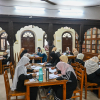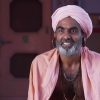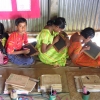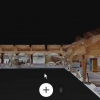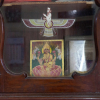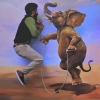Sahapedia: The Canberra scandal, which proved to be the tip of a smuggling iceberg, has once again exposed the enormity of the problem with regard to antiquities collections. Binoy Kampmark, in an article on the issue, says that caveat emptor is still the ‘perennial principle’ in the antiquities market. Would you agree?
A. Srivathsan: Across the world people have been insisting that museums and galleries should do a thorough provenance check, not only because it makes trouble for them later, but also because it is a good practice. With artefacts from certain places such as India, West Asia and so on, you have to assume that they don’t have a proper provenance certificate. It’s always better to do a thorough check and not the kind of checks which we’ve been witnessing in recent years. For example in the Canberra case, they too claimed they had done a thorough check but it’s not well done. So I quite agree both galleries and museums must do a thorough check before buying.
S: It has been suggested that when it comes to Indian antiquities, buyers tend to be more complacent as the Indian government has been less aggressive in the recovery process in the past. You too have indicated towards this tendency in an article where you point out that in 2010 the Lok Sabha admitted at being unable to retrieve even one out of the 13 objects it had listed for retrieval in 2007. Is this inertia one of the main reasons for the extent of smuggling in India?
A.S.: If you compare India to countries like Italy, which is also losing, in fact maybe even more than the numbers India does, you find that Italy certainly has a very active, rigorous, investigation police set-up, which follows most of the art thefts and actively pursues cases. We’ve also seen in the recent months Cambodia is doing very well to get back artifacts from the United States, from both museums as well as auction galleries. But we haven’t really seen anything from the Indian side so far. Of course, in the Nataraja case it can be viewed as a late exception. Most of the other things they’ve not pursued.
S: Why haven’t they done so?
A.S.: One, I don’t think the police or the State has actually taken art theft seriously. For example, in Tamil Nadu there is an idol wing but idols are just one part of it, there are other things as well, paintings and so on. And second, if you look at the staffing and the capacity, they’re far from satisfactory, because you really require someone who is better informed about not only art objects but also about international trading practices, some amount of international law etc. So I don’t think either the central or state authorities have taken art theft seriously. In fact I would strongly advocate for something like the Italian model, a dedicated investigation authority to pursue this.
S: You have also mentioned that according to a UNESCO study, illicit trade in antiquities, which was about U.S. $40 billion in 1993, has grown to reach U.S. $60 billion. How is it that even while the market is getting more regulated, illicit trade is in fact increasing? Is looting in fact a consequence of a free market in ancient art?
A.S.: See every year some new area surfaces, for example, in Egypt recently after the Arab Spring a lot of antiquities were stolen and surfaced in different art markets. Before that in Iraq we know what happened, in fact the very first day when the American army landed there, the National Museum was looted and the objects started surfacing in different markets. We have recently read a report that Switzerland seems to be a hub for some of the new Egyptian and Syrian artefacts. So every year there is a certain kind of area that opens up, which is mostly less politically stable, and objects from these countries seem to move into the antiquities market freely. And I don’t think countries have very serious import regulations, they’re not really looking at who is bringing in what. It’s only later after it comes into the country and surfaces in one of the auction shops or a gallery that it’s caught and then further investigations confirm that it was stolen. How effectively it is possible to filter these artifacts is another question but certainly the import regulations in many countries are pretty easy so they can bring them in easily.
S: Cultural patrimony is a divisive issue, with some people suggesting an internationalist perspective, in which art is seen as belonging to humankind in general and that countries which have more developed modes of preservation, should therefore be given locational preference. Whereas, others say any object removed from its context loses all meaning and becomes merely a commodity. What do you feel?
A.S.: Certainly what is advocated is that objects communicate better meaning and significance only in the place where they are found. Of course certain precious objects cannot be kept in situ, but definitely they have to be kept in the same cultural region where they have a higher level of significance and connect. So to argue that they should go to museums which are better protected abroad is an argument that big museums have been proposing in order to retain whatever contestable objects that they’ve got, and it can no longer be taken seriously.
People are saying that some of these museums are what you call encyclopaedic or universal museums or world museums and they should be kept outside of restitution and all these demands even if the objects that they own are of doubtful origin. This will no longer wash. Both legally and morally speaking the object has necessarily to go back to where it belongs.
Then the next question is whether the conditions of preservation and exhibition are adequate enough in the countries from where these objects originated. That has to be improved vastly. Certainly the conditions of museums in India are nowhere in the league of the museums abroad, in terms of display or user-friendliness or the level of research and dissemination—on all counts they will fall short. But that cannot be connected to the point of buying of these illicit antiquities, they are two separate issues. So we have to make a very clear distinction that the object clearly belongs to the country from where it originated and it has to go back. Simultaneously one has to improve the conservation and display techniques and the institutional arrangement in the host country. Both need to be done.
S: There is a related case, which you have written about, that touches upon many of these issues—that of the Nataraja bronze in the British Museum and the Indian government fighting the case of repatriation in the name of God. Could you share some details about this intriguing episode?
A.S.: About this case of the Pathur Nataraja in Britain, in the 1980s this Nataraja idol which was found in this village called Pathur by someone who was living near the temple. He was digging around in the vicinity when he found the idol and sold it to an art dealer. The idol eventually landed up with a Canadian company called Bumper Corporation when they bought it through an antique dealer in London. This Canadian firm wanted to restore the idol before they put it up in some place for display, so they handed it over to someone at the British Museum to clean it up. That’s when it was spotted and the British government seized it. Then the government of India impleaded itself in the case and asked for its return. The bumper corporation became the defendant, the case went through and there were the typical arguments like whether it’s the same Nataraja or not, they called forensic experts, archaeologists, etc. as witnesses to prove that it came from the same region. There were also certain technical issues. For instance the deity is a legal person under the Indian law and in fact the case was filed in Nataraja’s name and it threw up an interesting question from a legal aspect whether the laws in countries like India which recognise a deity as a legal person would be applicable in other countries as well. But in the London case the trial judge agreed that Nataraja is a legal entity and the ownership was India’s and the idol was eventually returned. It was a very interesting case, one of the most notable ones, which was discussed extensively across the world both for the kind of investigative trial that took place and also its other legal aspects.
S: In the recent Canberra controversy, you have been mentioned by the authors of ‘Chasing Aphrodite’ on their blog as being one of the key people in unravelling the plot. What did the work involve?
A. Srivathsan: ‘Chasing Aphrodite’ is one of the most visited and reputable blogs which keep track of many illicit antiquities and its main authors, Jason Felch and Ralph Frammolino, have been doing excellent work on this. In the Canberra case, at least when the story first broke, many people got interested because Subhash Kapoor was a very big name and immediately people started looking at which museums bought artefacts from Kapoor. ‘Chasing Aphrodite’ took the lead as did many others and they’ve been consistently following the case.
S: What do you think about the Wikiloot concept, that is aiming to ‘create an open source web platform, or wiki, for the publication and analysis of a unique archive of primary source records and photographs documenting the illicit trade in looted antiquities?’
A.S.: Crowdsourcing is one of the new ways to look at things, so Wikiloot should be seen more like crowdsourcing to track illicit antiquities. I mean even during the Nataraja episode, the bloggers kept ahead, newspapers kept ahead of investigation, or if not ahead at least on par.
S: You have been writing on these issues for a while, what have your interactions with museums in India been like?
A.S.: This particular case we’ve been looking at even before Kapoor came into the picture. The Hindu has been extensively covering it ever since Sanjivi Asokan, who was another major figure in the case, was arrested. We’ve also covered Kapoor’s extradition and his attempts to delay it for almost a year, by applying to different courts. His bail application went right up to the Supreme Court. So in that sense it wasn’t just Kapoor or the Nataraja idol which brought attention to it but as an institution we have been looking at archaeology and antiquities for a long time.
Now in terms of my interactions with museum authorities, the two museums I frequent the most are the Egmore Museum, Chennai and the National Museum, New Delhi. I’ve also been reading many things that have been published by the Madras Museum for many years. Up until about the 1960-70s, the Madras Museum was a great institution in terms of scholarship, research, the kinds of artefacts they had and the continuous interest they showed in displaying acquisitions. But post-70s I think the standard has fallen tremendously.
If you look at the recent publications it’s quite evident. And if you look at the exhibits themselves, they’re hardly interactive or user-friendly. There are some labels—you know the Bronze Gallery is one which has some amount of investment of energy and money in display—but even then there are no audio tours or anything of the sort. We know that the bronzes are great but that’s all one knows. Each bronze has a great story and you have to appreciate it aesthetically—how does the museum enable it? It’s not enough if you just put the object on display, there’s a certain kind of facilitation of interaction must happen, which I don’t think happens. We also have some excellent collections in other galleries which need to be properly displayed.
In terms of the reserves that the museums have, we know that including in the National Museum, not more than 15-20 per cent of their collection is displayed, so there’s a large amount of objects lying in the reserves. Whether they are rotating these objects periodically, what is the kind of disclosure in terms of their acquisitions, we have no clue. If you read the recent reports about the National Museum, they are not encouraging, in fact the situation is depressing and it has come under sharp criticism. So the state of museums in India needs to be vastly improved. Of late one or two projects are underway, we’ll have to see how they come up. For instance Patna has invested in this and recently staged an international competition for global architects to rebuild its museum. We also know of initiatives in Calcutta and Bombay.
S: What would you say is the importance of museums for a country? Some look at the Indian museums as being antiquated and stuck in the colonial model. But what according to you can a museum stand for?
A.S.: Museum is a big word, so how does it reinvent itself in different contexts? For instance, we hear of community museums in Africa, where in smaller places, families that have their own heritage objects bring them in to be displayed on a kind of sharing basis, that’s one way to connect with the community. So the question is how does the museum authority visualise its role and what do they do to achieve it? It’s not just display, a good portion of the museum’s role is also about education. Education not only for a sense of history, it’s also the kind of aesthetics that it talks about, a record of a social practice and so on. So the question is whether the museum, the way it displays and communicates, is able to engage?
I recently saw a very impressive exhibition at the National Museum curated by Naman Ahuja, called ‘The Body in Indian Art’ (March 12 – June 7, 2014), it’s got a simple narrative but it has quite an impressive collection of objects. You look at how the body is represented across time in different forms, like body in death, heroic body, the sensuous body, etc. so you quickly catch the narrative, you don’t have to be extremely well informed about all this. If you read the captions and small write-ups, you know the display is structured in a particular way and is representing the objects in a certain way and you start connecting with it. So it requires a certain amount of effort and a willingness and desire to communicate.
S: There’s a lot of discussion about a post-colonial approach to museums as museum in the past have tended to display and emerge from certain power structures. What are your thoughts on this?
A.S.: Certainly, it is embedded in a certain colonial idea, museums were built in those days around that, the imperial project. But we’ve got past that, isn’t it? So it has been 60 years since we took charge of the museum, can we now reinvent it? How do we do this? How do we connect with the notion of heritage? What do we show? So you cannot just say, ‘We’ve inherited this’. Yes, in a way it’s a legacy problem, but what stops us from reinventing it? Why can’t you have a more public-friendly display? You don’t have to practice what the West does in terms of its narration or display techniques. If you think there’s another way to do it, why don’t you do it? You need to explore it, isn’t it?

